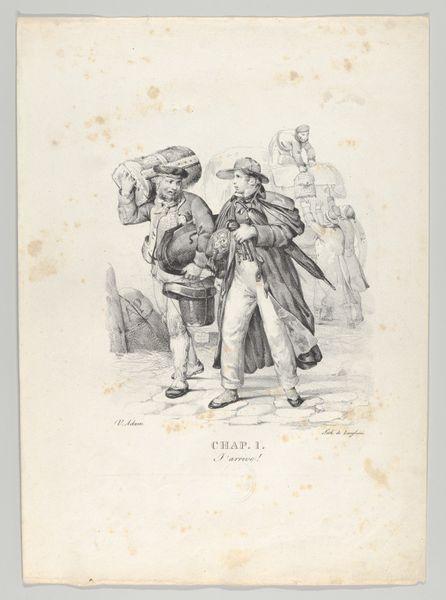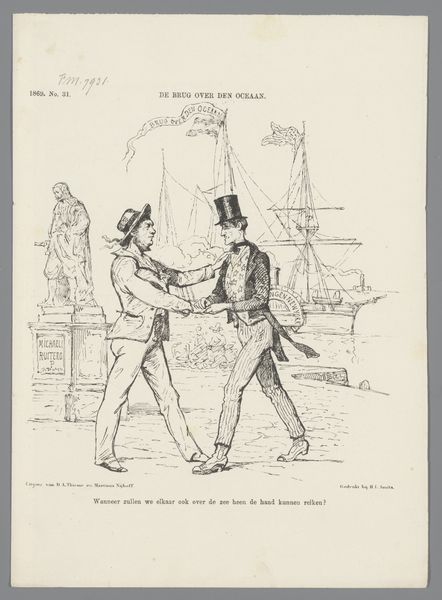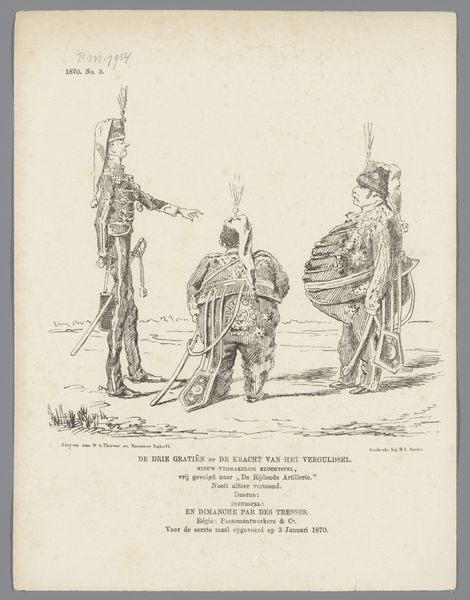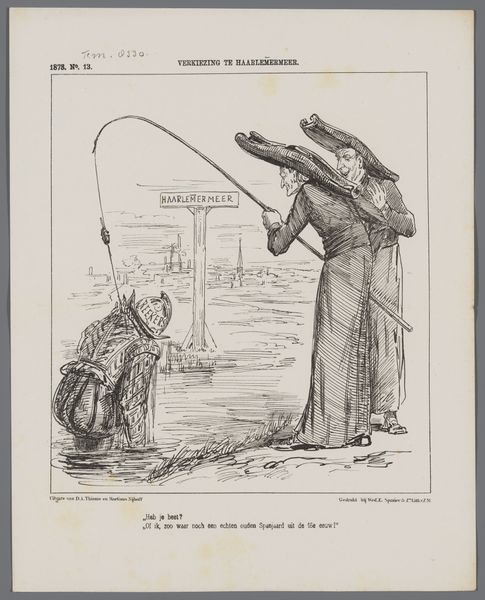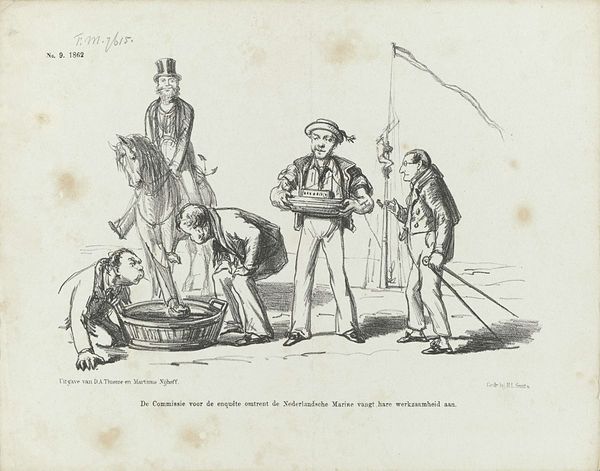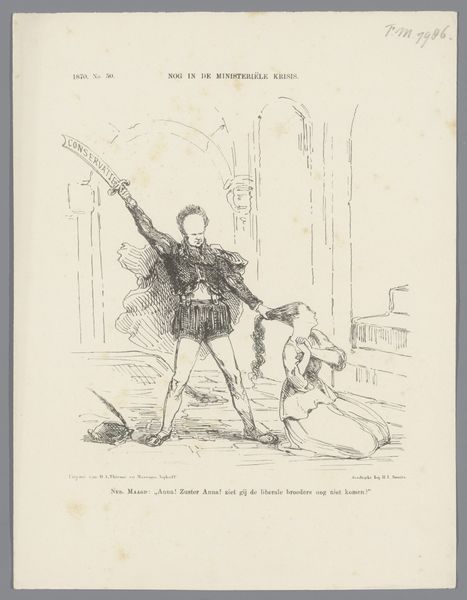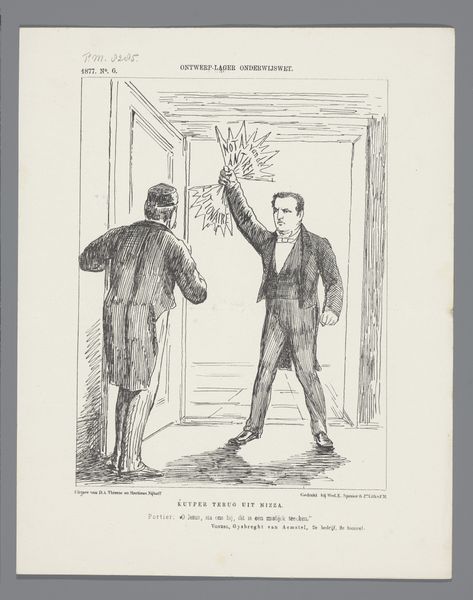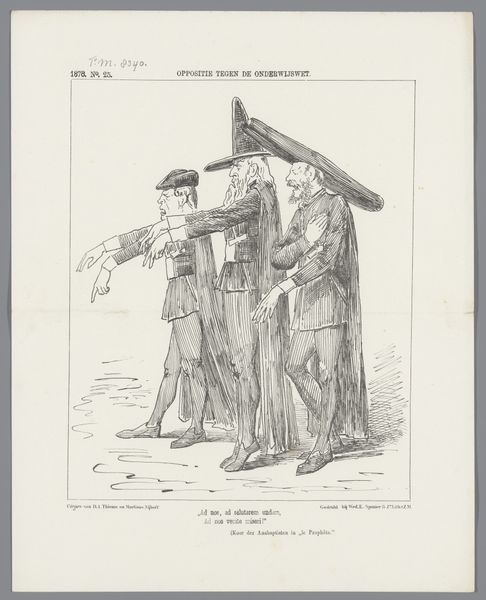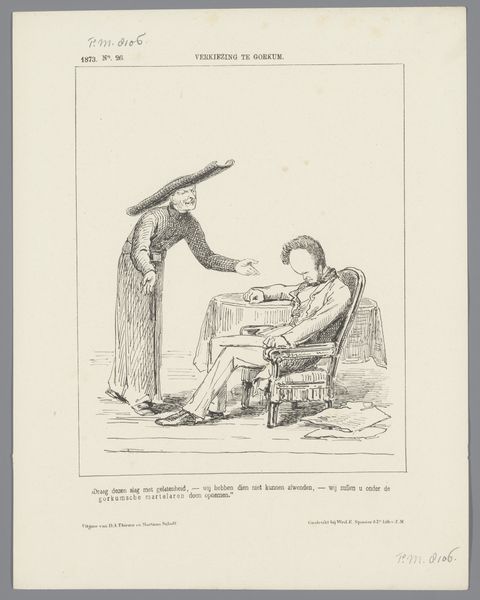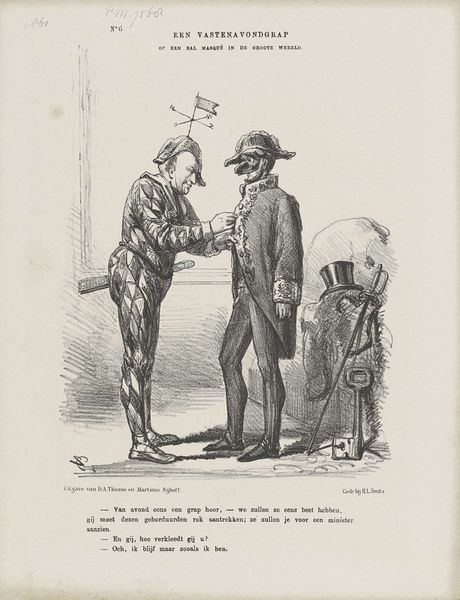
Eerstesteenlegging voor het nationaal monument van 1813 te Den Haag, 1863 1863
0:00
0:00
Dimensions: height 326 mm, width 471 mm
Copyright: Rijks Museum: Open Domain
Curator: This drawing, titled "Eerstesteenlegging voor het nationaal monument van 1813 te Den Haag, 1863", meaning "Laying the foundation stone for the national monument of 1813 in The Hague, 1863," comes to us from the hand of Carel Christiaan Antony Last. The work can be found here at the Rijksmuseum. Editor: What strikes me immediately is its almost satirical quality. The figures appear… rather comically rendered, don't you think? There is something reminiscent of caricature, and the stark contrast achieved through the minimal linework intensifies the overall mood. Curator: Absolutely, the social commentary is quite palpable. This piece showcases Last's perspective on the socio-political events of that time. One can delve into the political climate, looking into the monument and understanding who would visit or attend the dedication and laying of its foundation. Editor: Semiotically, consider the contrasts—the crisp, precise lines that define the subjects versus the emptiness of the space they occupy. Also the sailor on the left seems to have an urgency that clashes dramatically with the figure that sits opposite. It generates a certain tension and hierarchy. The formal qualities underline its narrative purpose so profoundly. Curator: Indeed, considering the historical context—the laying of a foundation stone—public perception must have been vital, the work itself would play into the monument’s narrative of nationhood in the Hague. Last's artistic choices undoubtedly echo how monumental architecture shaped social order and citizen pride. Editor: What a starkly constructed and evocative artwork. It is fascinating to witness how visual form intertwines with the undercurrents of political expression to create such an engaging piece of commentary. Curator: Precisely; it illuminates art’s enduring dialogue with societal forces and highlights just how deeply intertwined visual language is with cultural identity.
Comments
No comments
Be the first to comment and join the conversation on the ultimate creative platform.
